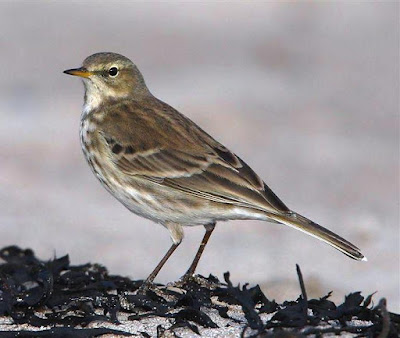Sayornis phoebe
 |
| Photo by Danny Bonilla (Pine Barrens Animals) |
Common name:
eastern phoebe (en); papa-moscas-fibi (pt); moucherolle phébi (fr); mosquero fibí (es); weibauch-phoebetyrann (de)
Taxonomy:
Order Passeriformes
Family Tyrannidae
Range:
This North American species breeds in most of the eastern half of the United States and in southern Canada all the way west to the Rocky mountains. They winter in the south-east of the United States and in Mexico.
Size:
The eastern phoebe is 14-17 cm long and has a wingspan of 26-28 cm. They weigh 16-21 g.
Habitat:
During the breeding season they are most often found in semi-open country, open woodlands and farmland, primarily near water. In migration and during the winter, they are generally found around woodland edges, woodland clearings, and in bushy fields.
Diet:
During Summer they mostly eat flying insects, but also spiders and millipedes. In the winter fruits and berries become an important part of their diet.
Breeding:
Eastern phoebes nest in May-July. The nest is an open cup, cemented with mud to a wall close to a ceiling, typically under a bridge, cliff or eave of a building. The nest is made of mud mixed with green moss and some leaves, lined with fine grass stems and hair. The female lays 2-6 white eggs which are incubated for 16 days. Both parents feed the young until fledging, which takes place 16-18 days after hatching. Most pairs raise two broods per year.
Conservation:
IUCN status - LC (Least Concern)
With a population currently estimated at 16 million and a very large breeding range, the eastern phoebe has undergone a large population increase of 17,5% per decade in the last 40 years. The species is not threatened at present.
















